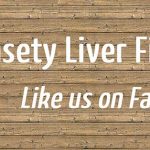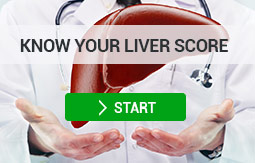Exercise Improves Fatty Liver
30 million Americans are affected by some form of liver disease, according to the American Liver Foundation. Non-alcoholic fatty liver disease (NAFLD) is one of the most common causes of chronic liver disease. Due to 25% of people and more than 6 million children in the United States suffering from this condition, the burden of fatty liver disease in the United States is constantly on the rise. This is why encouraging the public to participate in regular exercise is so important. Diet and exercise are all that is needed to reverse the effects of fatty liver disease, and you need to incorporate both into your lifestyle to truly become liver-healthy.
Regular Exercise Reduces Fatty Liver
A recent study published in the Journal of Hepatology reveals that physical exercise, regardless of its intensity or frequency may significantly help in fighting against fatty liver. Researchers have closely studied how working out impacts liver health.
Weight loss is the common recommendation for obese and overweight patients to reduce the severity of their fatty liver. However, there is another very effective way to fight NAFLD – by exercising.
In order to define how much and what kind of exercise is necessary for people diagnosed with liver disease, Dr. Nathan Johnson, PhD, Senior Lecturer at the University of Sydney (Australia) and his team recruited 48 volunteers. These volunteers were those leading a sedentary way of life and suffering from overweight and fatty liver not caused by alcoholic consumption. The volunteers were separated in four groups of 12. Each group was assigned a different workout program: the first group was doing exercises of low intensity but high frequency; the second group were instructed to do exercises of high frequency but low intensity; the third group was not working out often, and the fourth group (placebo group) was assigned to only do stretches and massages.
The changes in liver health were monitored through the magnetic resonance spectroscopy, namely, before the beginning of the study and after eight weeks from the launch of the experiment.
The Volume and Intensity of a Workout are Not Decisive
The volunteers from all four groups, regardless of their workout program, have demonstrated a significant decline in liver fat of about 18-29%. The first and second groups had slightly better results than the others. However, the positive effect of working out were not associated with the progress in weight loss. To note, the placebo group has shown an increase in liver fat by an average of 14%.
“The results from our study show that all exercise doses, irrespective of volume or intensity, were efficacious in reducing liver fat and visceral fat by an amount that was clinically significant, in previously inactive, overweight, or obese adults compared with placebo. These changes were observed without clinically significant weight loss,” explained Dr. Johnson.
Scientists concluded that keeping to a healthy and active lifestyle are the key components of liver care and any kind of regular exercise can improve liver health.
About Fatty Liver
Non-alcoholic fatty liver disease (NAFLD) is the most frequent form of liver condition worldwide. NAFLD is not related to alcohol consumption and can be diagnosed if more than 5%-10% of the liver`s weight is made up of fat. This can quickly progress to severe liver damages.
Non-alcoholic fatty liver disease is a common problem in industrialized countries and in most cases caused by an unhealthy way of life: too much fast food and not enough physical activity. It can also affect overweight and obese people and those who have diabetes, high cholesterol or serious liver diseases.
Sources:
http://dx.doi.org/10.1016/j.jhep.2015.02.022
http://www.liverfoundation.org/abouttheliver/info/nafld/
http://www.easl.eu/discover/news/new-study-indicates-that-exercise-improves-non-alcoholic-fatty-liver-disease
http://www.liverdirectory.com/

 (442) 244-5115
(442) 244-5115















